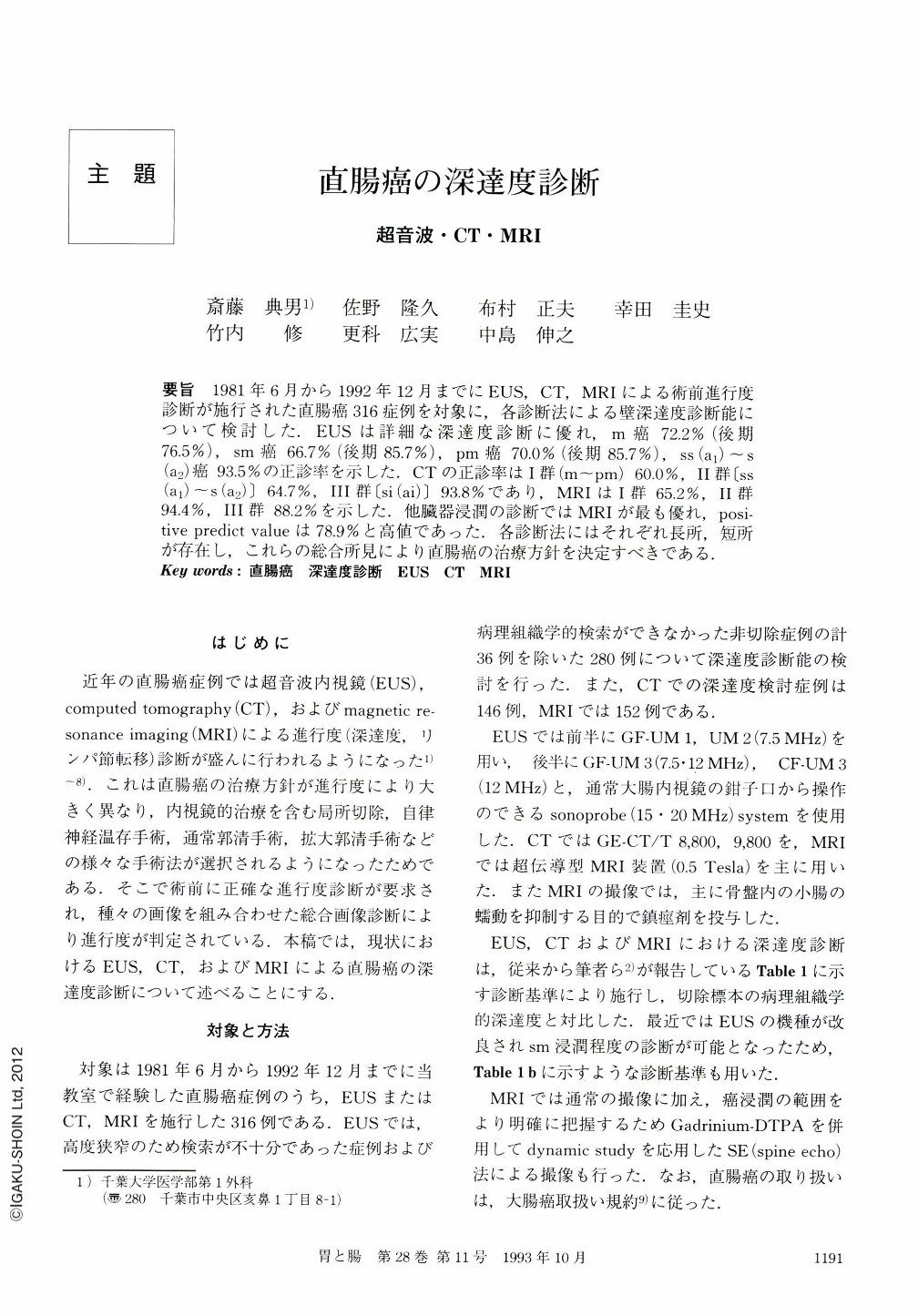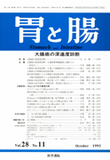Japanese
English
- 有料閲覧
- Abstract 文献概要
- 1ページ目 Look Inside
要旨 1981年6月から1992年12月までにEUS,CT,MRIによる術前進行度診断が施行された直腸癌316症例を対象に,各診断法による壁深達度診断能について検討した.EUSは詳細な深達度診断に優れ,m癌72.2%(後期76.5%),sm癌66.7%(後期85.7%),pm癌70.0%(後期85.7%),ss(a1)~s(a2)癌93.5%の正診率を示した.CTの正診率はⅠ群(m~pm)60.0%,Ⅱ群〔ss(a1)~s(a2)〕64.7%,Ⅲ群〔si(ai)〕93.8%であり,MRIはⅠ群65.2%,Ⅱ群94.4%,Ⅲ群88.2%を示した.他臓器浸潤の診断ではMRIが最も優れ,positive predict valueは78.9%と高値であった.各診断法にはそれぞれ長所,短所が存在し,これらの総合所見により直腸癌の治療方針を決定すべきである.
Examinations by endoscopic ultrasonography (EUS), computed tomography (CT) and magnetic resonance imaging (MRI) were performed in 316 patients with primary rectal cancer to evaluate their preoperative diagnostic accuracy of local invasivity.
Invasivity of rectal cancer was accurately predicted in 235 out of 280 patients (83.9%) by EUS, in 97 out of 146 patients (66.7%) by CT, and in 129 out of 152 cases (84.9%) by MRI. For a detailed examination of invasivity, EUS was superior to CT and MRI. EUS could detect the degree of cancerous invasion which was limited to whether the mucosal, submucosal or proper muscle layers. However, MRI was the best examination modality for detecting invasion to the other organs: positive predictive values were 33.3% by CT and 78.9% by MRI.
In conclusion, it is very important to make a therapeutic plan for rectal cancer by putting the findings of EUS, CT and MRI together.

Copyright © 1993, Igaku-Shoin Ltd. All rights reserved.


